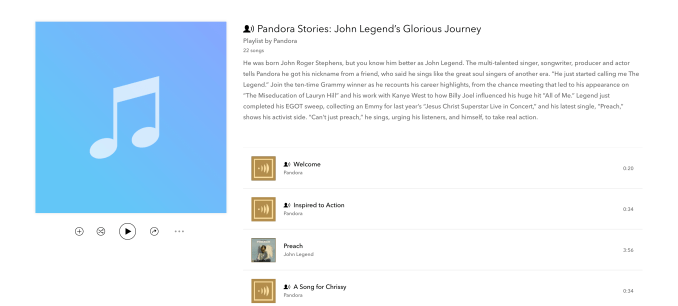Direct-to-consumer startups — making products that leverage the internet to bypass third-party marketplaces and retailers to engage with and sell directly to their customers — have been one of the biggest categories of growth in the world of e-commerce, and today one of the startups that helped create and prove the model is announcing a big round of funding to take its business to the next stage.
ThirdLove, which started with bras and now makes and sells a variety of lingerie and underwear catering to a wide variety of women’s shapes and sizes — in part through technology it developed that uses a smartphone camera to size and suggest products — has raised $55 million in funding.
CEO Heidi Zak, who co-founded the company with husband David Spector (both are ex-Google execs), said in an interview that the money will be used to help ThirdLove add even more sizes beyond the 78 that are offered today (“a bra for every body” is the expression she uses); as well as grow into three new areas: retail, international markets and category expansion into areas such as swim and athletic wear.
Not all of these may be coming online in the next year, she added, but the money will go towards building strategies in all three.
This round bumps ThirdLove’s valuation up to $750 million, a huge boost considering that the startup has only raised around $68 million since being founded in 2013. ThirdLove is already generating $100 million in revenues annually, Spector said, and has seen some 12 million to date use its Fit Finder, the tool in the app that measures a woman’s proportions in about a minute.
As impressive as that valuation sounds, so is the list of backers in this latest cash infusion. It’s being co-led by L. Catterton, which is owned in part by the luxury goods conglomerates LVMH and Groupe Arnault; and investment bank Allen & Company. But also participating are Anne Wojcicki, the cofounder and CEO of 23andMe; her sister Susan Wojcicki, the CEO of YouTube; broadcaster Katie Couric; Nancy Peretsman, MD of Allen & Company; Tim Armstrong, former CEO of Oath and AOL (who himself is making a big move now into DTC); Jeff Keswin; Michael Zeisser, former US chairman at Alibaba; Felicis Ventures and Valor Equity. (Existing investors include Andreessen Horowitz, NEA, Yuri Milner and Keith Rabois.)
“I’m a big fan of ThirdLove’s mission to build a brand for every woman, regardless of her shape, size, age, ethnicity, gender identity, or sexual orientation,” said Anne Wojcicki in a statement. “ThirdLove promotes reality over fantasy and shows the spectacular beauty of all sizes, shapes and colors of women.”
It’s a fair question to ask how and why a bra company is attracting attention from tech investors, and why TechCrunch (or any publication) might write about it as a tech startup.
The first answer is the most generic (but possibly the most important, as it’s one that we see infusing our news coverage at TC on a daily basis). Every company today is potentially a tech company, and every industry is potentially a tech industry. That is to say, we have well passed the point where just about any business or vertical can be built with a tech approach in mind, to underpin the product itself; or to help deliver that product to the world in a way that is better than what preceded it. ThirdLove is doing both of those.
On the part of the product itself, the company has leveraged the evolution in modern garment manufacturing, with the growth of smartphone usage and online shopping, as well as developments in AI-based computer vision.
To get a bra using the ThirdLove app, a woman takes some selfies, which are in turn used to help formulate the best bra size for her body. “Best size”, meanwhile, has taken on a new meaning. In the past, women with non-standard proportions would have needed to buy bras from ad hoc bra makers — time consuming and expensive.
ThirdLove, however, uses big data analytics to essentially aggregate the long tail, turning a single person’s quest into one from many people, and aggregating images of all the busts to help build the design of the bras, which it executes by tapping into more precise manufacturing techniques.
This is how ThirdLove manages to both create more individualised and tailored pieces while still achieving the all-important metric of e-commerce, economies of scale.
The second way ThirdLove uses technology is for what Zak describes as “using data for market fit.” It’s a big buyer of Facebook ads that target people it thinks could become customers, and it follows through with a more complete customer experience both in terms of recommending items and creating an efficient way to browse and then buy.
“We use the data we collect from Fit Finder” — that is the measuring tool in its app — “to create a better physical product and individual sizes, and then we use the data to create a better digital product experience,” Zak said. “We do all this in a way that more traditional retailers don’t.”
Indeed, that old versus new was highlighted to great impact last year, when ThirdLove waged a publicity campaign against the much-bigger Victoria’s Secret after its CEO made a dig against the company in an interview. It so happened that the CEO also used the same interview to make some other outmoded remarks that did not go down well with investors and the public, and ultimately he ended up stepping down. ThirdLove didn’t fully cause his departure, but its star definitely rose in the wake of all the controversy.
Zak said the resulting attention, which happened in November, may have had an effect. “We’re not a gifting destination traditionally, but then we suddenly had a stronger November and December,” she said.
With the new funds and new strategy, it will be worth watching how ThirdLove develops products down the road. Currently the company only has distribution in the US, although it’s already seeing a lot of orders coming from outside the country. The plan will be build more facilities more local to different international markets to seize the opportunity with that interest.
Similarly, its move into retail should be interesting. So far, the only work that the company has done in brick-and-mortar has been in pop-up shops where the aim was not to sell merchandise but simply to spread the word. Zak and Spector said they would like to retain some of its app-based individualised experience in any kind of physical retail play. It’s not clear how that would look, but it could potentially mean ThirdLove concessions in shops similar to what you typically see in the cosmetics department, where customers are consulted and sold items direct by people representing individual brands.




 Users will be able discover Pandora Stories using Search – the same way you’d look for one of Pandora’s standard curated playlists. The Stories may also be recommended to listeners through the Featured Playlists module in Browse.
Users will be able discover Pandora Stories using Search – the same way you’d look for one of Pandora’s standard curated playlists. The Stories may also be recommended to listeners through the Featured Playlists module in Browse.




